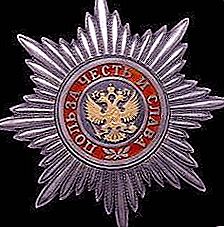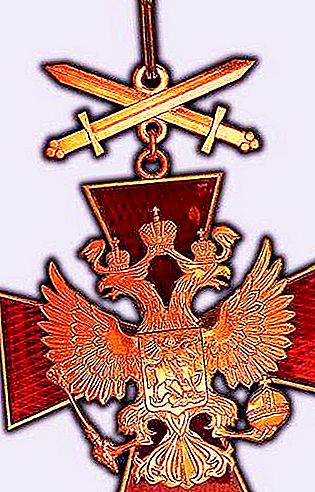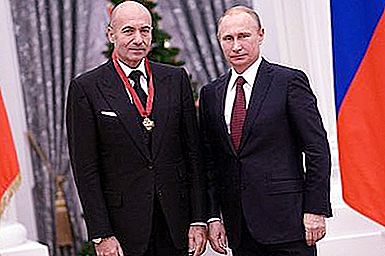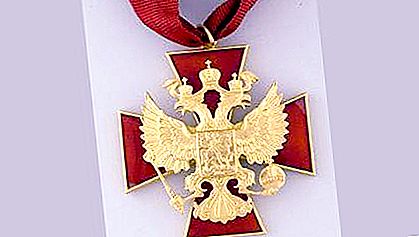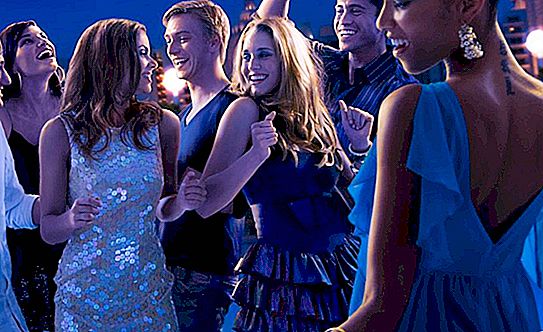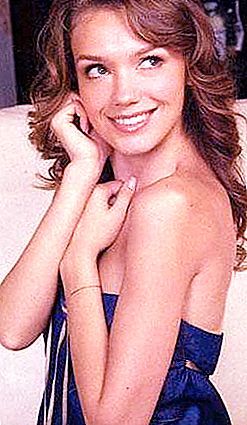The award "For Merit to the Fatherland" was one of the awards of the new Russian state. It was established in March 1994 by decree of the President of the Russian Federation. It has several degrees and until 1998 it was the highest award in the country.

Institution
In the era of the Soviet Union, its leadership established and issued many state awards, most of which were associated with the period of the Great Patriotic War. After the collapse of the USSR, from a legal and social point of view, there was some confusion with the awards and their significance in the new historical realities. However, four years after the birth of the new state, an award was instituted, which to some extent continues the tradition of the Order of St. Vladimir.
Historical roots
The Order "For Merit to the Fatherland" of the 1st degree, as well as of other degrees, is marked by the motto "benefit, honor and glory." It is known that this was the motto of the Order of St. Vladimir. This award appeared in 1782 in honor of Prince Vladimir the Baptist by decree of Catherine the Great and also had four degrees. The Empress dedicated the establishment of the award to the twentieth anniversary of her reign. The order was awarded to both military and civilians. And although the lowest ranks could also claim a distinction, because of the order of awarding, only ranks at a level no lower than a secret adviser could apply for the highest degree award. Seven years later, Catherine, as another additional distinguishing feature to the order of the fourth degree, which was presented as military merit and feats, added a bow in red and black colors. One of the first honors awarded with such an insignia was the great Russian commander Mikhail Barclay de Tolly. The order was valid until the October Revolution of 1917.
Award Rules
The Statute of the Order "For Merit to the Fatherland" implies rewarding for outstanding services of a wide range. It includes achievements in the field of strengthening the statehood of the country, socio-economic development, in the field of sports, culture and art, science, international cooperation, and increasing the defense capability of Russia.
Until 1998, the award had the status of the highest state. Then in July, the head of state established a new order of the Holy Apostle Andrew the First-Called. In 2010, the award system underwent some improvements. The regulation on this order was also supplemented with minor changes.
Award degrees
The state order has four degrees. The highest is the Order of Merit to the Fatherland, 1 degree. The orders of the first two degrees have a sign and a star, and the remaining two degrees assume only a sign. The award process involves the consistent presentation of the award from the fourth to the first degree. It is understood that the presentation of the insignia of the lowest level of the hierarchy, the fourth, is possible only on condition that the gentleman has already received the medal of the Order for Merit to the Fatherland Order of the first degree, as well as the second.
For the military, who, when performing military operations or under other circumstances, showed heroism, valor and excelled in completing missions, their own modification of the award is designed - the sign of the order with swords.
Order Rules
The Order “For Merit to the Fatherland” of the IV degree can also be awarded bypassing the basic rule. Persons who qualify for a high award include those assigned to the Hero of Russia, Hero of Labor of the Russian Federation, Hero of the USSR or Hero of Socialist Labor. In addition, cavaliers of the orders of St. George, Alexander Nevsky, Ushakov, Suvorov can also be awarded. The statute of the award also allows that it may be awarded to a person who has not previously been marked with any state marks of distinction, if this is the decision of the highest official of the Russian Federation.
There are also a number of rules for awarding marks of the first two degrees. So, the Order of Merit for the Fatherland, 1st degree, is awarded twice a year - in honor of the celebration of Constitution Day of the Russian Federation and the Day of Russia. As a rule, this is an annual solemn ceremony held in the Catherine’s Hall of the Kremlin, where all those assigned to the award are invited. The presentation is made personally by the president of the country. The Order of Merit to the Fatherland, 2nd degree, is awarded in the same way.
External design
The award, depending on seniority, has its own characteristics of appearance. So, the two senior degrees include a sign and a star, while the two younger ones only a sign. Also attached to the two senior orders is a silk, moire ribbon of dark red color. The badge of the order, made of gilded silver, has the shape of a cross with equal and expanding ends. The obverse is coated with ruby enamel. Here, in the center, a large gilded image of the national emblem of Russia is superimposed. A medallion is placed on the reverse in the center, on the circumference of which there is an inscription - the motto of the order is “benefit, honor and glory”. The year of foundation of the award is located in the center of the composition - "1994". Laurel branches are engraved at the very bottom of the medallion. On the lower vertical beam of the cross is placed the serial number of the award.
The largest cross is included in the Order of Merit to the Fatherland, 1st degree. The distance between the wide ends of the cross is six centimeters. Mounted on a tape 10 centimeters wide. In the order of the second degree, these indicators are five and 4.5 centimeters. The third degree is five and 2.4 centimeters. The smallest cross of the fourth degree, there the distance between the ends is only four centimeters. It is mounted on a pentagonal block, sheathed with moire ribbon 2.4 cm wide with an eyelet and a ring.
The eight-pointed star of the order is made of silver with polished strals located between the main rays. On the obverse there is a silver medallion, on the circumference of which the motto of the order (without a comma) and laurel branches are engraved in relief enamel on red enamel. In the center of the medallion on black enamel there is a gilded relief image of the Russian state coat of arms. On the reverse of the star is the serial number. The size of the stars also depends on the degree. The first degree involves a length between the opposite ends of 8.2 centimeters, the second degree - one centimeter less.
A military award presupposes additional attributes - crossed swords. They are attached to the ring above the cross. The length of the sword is 2.8 centimeters, the width is three millimeters.
Reward Rules
The insignia described in this material is one of the highest state awards, which has a fairly broad statute. It also provides for the prescription of the wearing of this insignia. The most solemn appearance is the Order of Merit to the Fatherland, 1st degree. The badge of the order is located on the ribbon passing over the right shoulder. The star is mounted on the chest on the left side below the awards on the block. If the gentleman has the Order of St. George, the award is located under it. The same applies to the stars of the Order of the second degree. The presence of the first two degrees of the order involves wearing only a star of the highest category. At the same time, the Order of Merit for the Fatherland, 2nd degree, is located on the neck tape. The same rules apply to the third degree.
The youngest award is worn on the chest on the left side of the block. If there is Saint George of the fourth degree, the award is placed after him. If there are several degrees, the holder of the order bears the mark of the highest of them. This rule does not apply to military rewards with swords. Medals of this insignia are not worn if there is an order "For Merit to the Fatherland". Orders and medals do not intersect, with the exception of a military medal with swords.
Special nuances
In addition to the main form of the order of the fourth degree, the kit also comes with its miniature copy. It can be worn both daily and in special cases. It, like the main award, is attached after a miniature copy of St. George of a similar degree.
There are also some differences in wearing orders in uniform and civilian clothes. In the first case, the tape is attached using a strap. If there is a reward of St. George, the ribbon of this order is first put on, and then the tape "For Merit" follows. On a civilian suit, the tape is attached using a socket on the left side.

